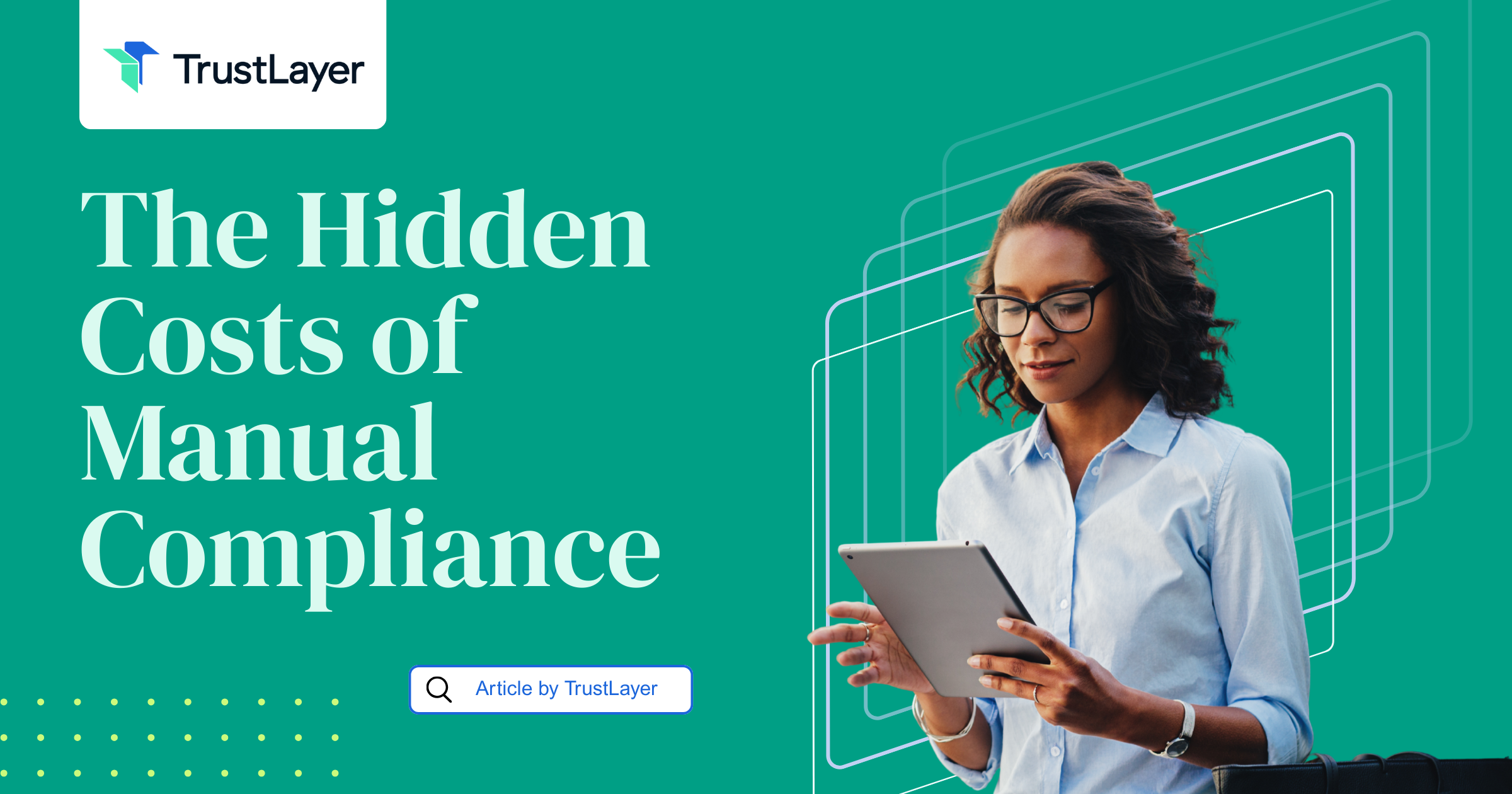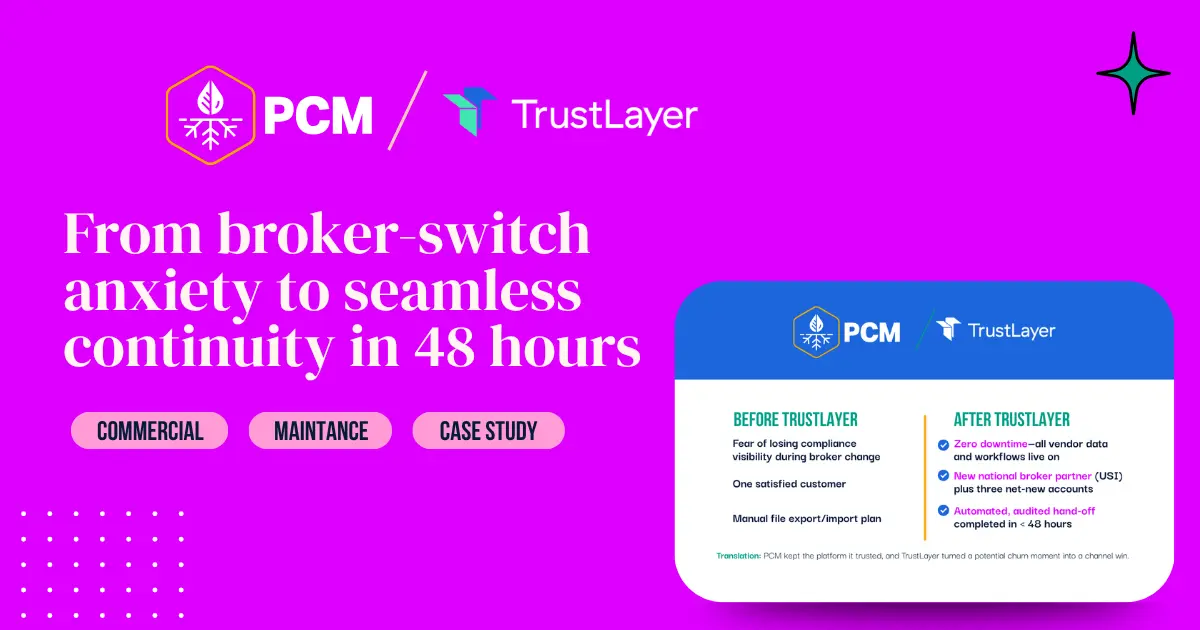Why vendor risk is a sleeping giant

Why third-party risk is a sleeping giant for your business
Running a business comes with its fair share of challenges. From managing operations to satisfying customers, it can be overwhelming. However, there's one aspect that often gets overlooked, and it could be silently sabotaging your success: third-party risk. This invisible giant is lurking in the shadows, waiting to strike when you least expect it. In this article, we will dive deep into the world of third-party risk and uncover why it should be a top priority for your business.
Risk management is all about controls
As business owners, we're constantly thinking about ways to protect our assets and ensure smooth operations. We invest significant time and resources in implementing controls to mitigate risks within our organizations. However, what many fail to realize is that these controls only address the risks within our four walls.
While building a fortress within is crucial, it's equally important to recognize that outside forces can have a significant impact on your business. This is where third-party risk comes into play. Third-party vendors, suppliers, and partners can create a web of risk that stretches far beyond the reach of your controls.
When it comes to third-party risk, it's essential to conduct a thorough assessment of the vendors, suppliers, and partners you work with. This assessment should include evaluating their financial stability, security measures, and overall risk management practices. By understanding the potential risks associated with these external entities, you can better protect your organization from any negative consequences.
Furthermore, it's important to establish clear and comprehensive contracts with your third-party entities. These contracts should outline the expectations, responsibilities, and liabilities of both parties involved. By clearly defining these terms, you can minimize the potential for misunderstandings or disputes that could lead to risks for your business.
In addition to assessing and contracting with third-party entities, it's crucial to establish ongoing monitoring and communication channels. Regularly reviewing the performance and security measures of your vendors, suppliers, and partners can help identify any emerging risks or red flags. Open lines of communication allow for timely reporting and addressing of any issues that may arise.
Another aspect of third-party risk management is contingency planning. While you may have controls in place to mitigate risks within your organization, it's essential to have backup plans in case a third-party entity fails to deliver or experiences a security breach. By having alternative options and contingency plans, you can minimize the impact of any disruptions caused by external factors.
Lastly, staying informed about industry trends and best practices in third-party risk management is crucial. The landscape of risks is constantly evolving, and new threats can emerge at any time. By staying up to date with the latest developments, you can adapt your risk management strategies and ensure that your controls are effective in addressing both internal and external risks.
But you can't control your vendors
When collaborating with external parties, it's easy to fall into the trap of assuming that they have the same level of commitment to risk management as you do. However, the truth is that you have limited control over their actions and practices. They may have their own processes in place, but are they adequate? Are they in compliance with industry standards? These are questions that should keep you up at night.
One of the biggest challenges in managing vendors is ensuring that they adhere to the same risk management standards as your organization. While you may have robust processes in place to identify and mitigate risks, your vendors may not have the same level of diligence. This lack of control can leave your organization vulnerable to potential risks and threats.
Imagine a scenario where your organization relies heavily on a vendor for a critical component of your operations. You have done your due diligence and selected a vendor that you believe is reliable and trustworthy. However, what if that vendor's risk management practices are not up to par? What if they have not implemented the necessary security measures to protect your sensitive data?
The consequences of inadequate risk management by your vendors can be severe. A data breach or a security incident can not only lead to financial losses but also damage your organization's reputation. Customers may lose trust in your ability to protect their information, leading to a loss of business and potential legal consequences.
It's important to recognize that while you may not have direct control over your vendors, you do have the ability to influence their practices. Establishing clear expectations and requirements for risk management in your vendor contracts can help ensure that they prioritize and invest in robust risk management processes.
Regular monitoring and assessment of your vendors' risk management practices is also crucial. Conducting audits and assessments can help identify any gaps or weaknesses in their processes and allow you to take appropriate action to mitigate the risks. Additionally, fostering open communication and collaboration with your vendors can help build a strong partnership based on trust and shared commitment to risk management.
Ultimately, while you may not be able to control your vendors entirely, you can take proactive steps to minimize the risks associated with their actions. By being vigilant and proactive in managing vendor risk, you can protect your organization and ensure the continuity of your operations.
The horror stories of bad vendor practices
It's not just a hypothetical scenario. The business world is full of horror stories resulting from bad vendor practices. From data breaches to supply chain disruptions, the consequences of negligence can be severe.
Take the time to research and learn from these cautionary tales. By understanding the potential risks and consequences, you can proactively safeguard your business against similar pitfalls.
What you can control is… your contractual risk transfer
While you can't control your vendors, you can still take measures to safeguard your business. One efficient way to do this is through contractual risk transfer. By transferring insurance risk through well-crafted contracts, you can allocate responsibility and liability in case of any unforeseen events or damages.
Contracts act as a safety net, shielding your business from potential financial losses and legal disputes. This proactive approach not only protects your bottom line but also sends a clear message that risk management is a top priority for your organization.
What does it mean to transfer your insurance risk?
Transferring your insurance risk means shifting the burden of unforeseen events or damages to your third-party vendors. Essentially, they become accountable for any mishaps that occur in the course of their service. This can include property damage, bodily injury, or even cyber breaches.
By transferring insurance risk, you can offload the financial impact of potential incidents onto your vendors' insurance policies. This not only helps protect your business but also ensures that your vendors have sufficient coverage to handle any unforeseen circumstances.
Risks to your business if you don't adequately control your contractual risk transfer
Failure to adequately control your contractual risk transfer can have dire consequences for your business. Without proper risk management, you run the risk of:
- Financial loss: In the event of an incident, you may be left to bear the brunt of the financial impact, potentially leading to substantial losses.
- Reputation damage: If a third-party vendor's negligence causes harm or disruption, the consequences can extend beyond financial losses. Your brand reputation may suffer, affecting customer trust and loyalty.
- Legal complications: In the absence of solid contractual risk transfer, legal battles can become a nightmare. You may find yourself entangled in lengthy and costly litigation due to your vendor's actions.
Tips and tools for your business to control contractual risk transfer
Managing contractual risk transfer might sound daunting, but with the right approach, it can be an effective strategy for your business. Here are a few tips and tools to help you navigate the process:
- Clear and concise contracts: Ensure that your contracts clearly outline the risk transfer provisions and the respective responsibilities of all parties involved. Seek legal expertise to ensure your contracts are comprehensive and enforceable.
- Thorough vendor evaluation: Before partnering with any third-party vendor, conduct a thorough evaluation of their risk management practices. Verify their insurance coverage, certifications, and compliance with industry standards.
- Regular monitoring and audits: Don't assume that once the contract is signed, your job is done. Implement a system for regular monitoring and audits to ensure ongoing compliance with risk management requirements.
- Utilize technology: Leverage technology solutions that streamline the process of managing contractual risk transfer. Solutions like TrustLayer provide a centralized platform for tracking certificates of insurance and vendor compliance, making the task more efficient and less time-consuming.
Small things you can do to help your team accomplish tedious risk transfer tasks (like use COI trackers)
Managing risk transfer tasks can be tedious, especially when it involves tracking certificates of insurance (COIs) from multiple vendors. To alleviate this burden, consider implementing COI trackers as part of your risk management strategy.
COI trackers automate the process of collecting, monitoring, and verifying insurance certificates from your vendors. With this technology, your team can focus on more strategic tasks while ensuring that your vendors are compliant with insurance requirements.
Wrapping this up
In conclusion, the sleeping giant of third-party risk is not to be underestimated. While you may have a solid risk management framework within your organization, third-party vendors can introduce a whole new level of uncertainty. By prioritizing contractual risk transfer and implementing effective risk management strategies, you can fortify your business against potential threats. Remember, the key to success lies in being proactive and staying one step ahead in the game of risk management.
Don't let the sleeping giant of third-party risk catch you off guard. Embrace the future of risk management with TrustLayer, the best in class certificate of insurance (COI) tracker designed for the modern risk manager. Say goodbye to the administrative burden of manual document verification and hello to efficiency with our automated solutions. Join the hundreds of thousands of companies who trust TrustLayer to streamline their vendor document management and proof of insurance processes. It's time to move forward with next practices and build the trust needed to work together seamlessly. Ready to transform your risk management strategy? Set up a time to talk with our team and see how TrustLayer can make a difference for your business.
















